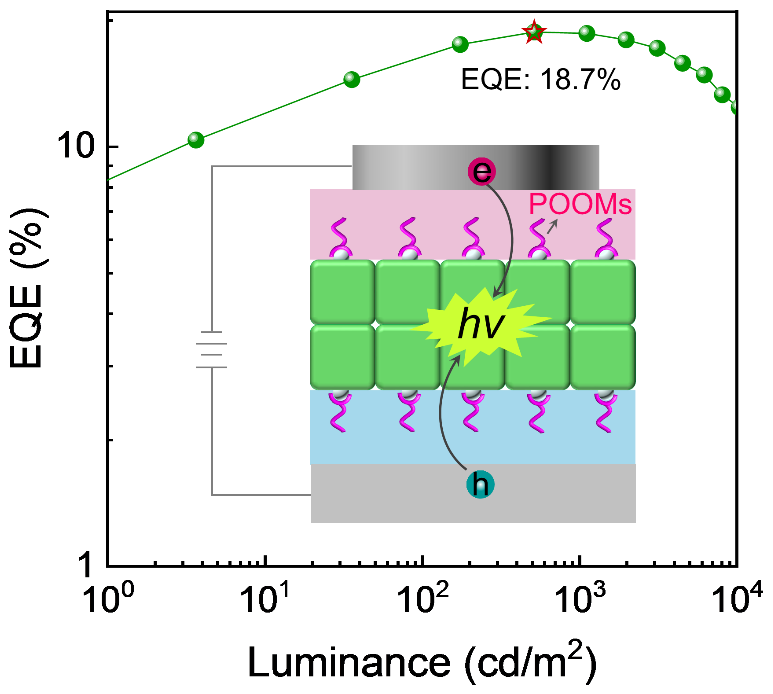Aug 10 2020
An article in Nature Communications reports a bilateral passivation strategy to promote the efficiency and stability of perovskite QLED.

Perovskite QLEDs possess the features of wide gamut and real color expression, which have been considered as candidates for high-quality lightings and displays. However, their efficiency and stability still need to be promoted before practical application. Now, being published in Nature Communications, Haibo Zeng, Jizhong Song and colleagues report a novel bilateral passivation strategy that greatly improve the efficiency and stability of perovskite QLEDs.
A large part of fluorescence would be lost when the colloidal QDs transform into the QD solids due to the reproduced defects during the film-forming process. These defects located on the interface would sorely affect the injection and transportation of carriers, and degrade the device efficiencies. Although a lot of surface passivation strategy on colloidal QDs has been tried, this problem cannot be avoided.
The team first try the unilateral passivation on the top interface of perovskite QD film, some improvements have been made, but not so good as they desire. As the QD layer is sandwiched between CTL and HTL, whether it can get a better effect if both the top and bottom interfaces were passivated simultaneously. The bilateral-passivated QLEDs with TSPO1 on both the top and bottom interfaces are constructed. As expected, the efficiency and stability of perovskite QLED are greatly promoted, where the max. EQE reaches 18.7% with an improvement of 140% and the lifetime is enhanced by 20-fold, reaching 15.8 hours.
The team demonstrated that this bilateral passivation strategy is a universal method, besides the P=O based ligands (TSPO1, DPEPO, TPPO), other organic molecules with various functional groups, such as DMAC-DPS (~S=O), nitrosobenzene (~N=O) and benzophenone (~C=O) are also applicable in this system. Besides, this strategy will be also universal in other film based device, “we are trying to propose a new idea for interface engineering of film-based photoelectric device”, says Song.
Having demonstrated the feasibility of bilateral passivation on improving the efficiency and stability, the team are now looking to further optimize the interface processing method, which is believed to further improve the device stability.
ORIGINAL ARTICLE: Xu, L., Li, J., Cai, B. et al. A bilateral interfacial passivation strategy promoting efficiency and stability of perovskite quantum dot light-emitting diodes. Nat Commun 11, 3902 (2020)
https://www.nature.com/articles/s41467-020-17633-3